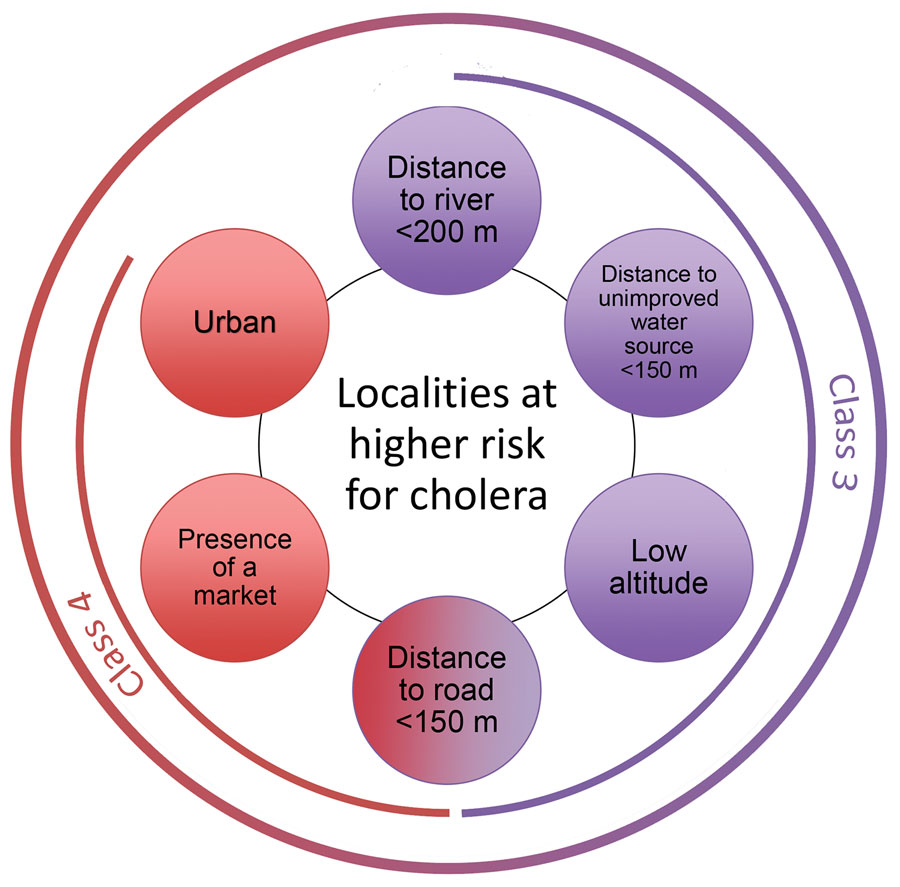Volume 27, Number 1—January 2021
Research
Delineating and Analyzing Locality-Level Determinants of Cholera, Haiti
Figure 6

Figure 6. Comparison of the most strongly associated risk factors for cholera between 2 high-risk classes, Centre Department, Haiti. The most strongly associated risk factors for suspected cholera cases were distance <200 m to a river, distance <150 m to an unimproved water source, low altitude, distance to a road <150 m, presence of a market, and urban areas. Class 3 and class 4, both at higher risk for cholera, were close to a road but differed for the other identified risk factors.
Page created: November 23, 2020
Page updated: December 21, 2020
Page reviewed: December 21, 2020
The conclusions, findings, and opinions expressed by authors contributing to this journal do not necessarily reflect the official position of the U.S. Department of Health and Human Services, the Public Health Service, the Centers for Disease Control and Prevention, or the authors' affiliated institutions. Use of trade names is for identification only and does not imply endorsement by any of the groups named above.